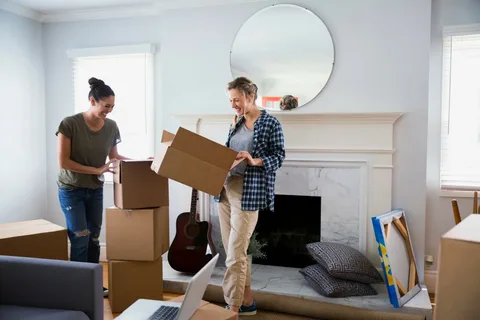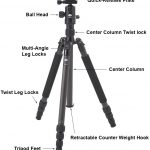While moving from one house to another can be an exhilarating experience, it usually brings a storm of anxiety. Among the top concerns for individuals and families is making sure their personal assets reach their destination undamaged. Damaged things can turn an enjoyable experience into a trying and expensive one whether you are relocating across the country or across the street. With wise preparation and a few professional pointers, you may fortunately greatly lower the chance of harm to your goods.
Covering everything from prepacking to unloading and unpacking at your new residence, this post provides professional guidance on saving your belongings during a move.
- Start with a thorough inventory
Before you start to pack, make sure you have a thorough inventory of your stuff. This not only keeps you organized but also gives a clear reference for double checking items once you arrived your destination.
Begin by room by room to noting fragile or valuable things apart. Consult this inventory to find out the quantities and kinds of packing materials you’ll need. It also assists later when inspecting for damage, filing insurance claims if necessary, or confirming that nothing is lost in transit.
- Purchase top of the line packaging materials to use
Among the major errors made during a move is skimping on packing supplies. Breakage chances rise with packaging not intended for protection or boxes that are too frail. about
This is what the pros advise:
Double walled, robust cardboard boxes meant to support delicate or heavy loads.
Padding options are packing peanuts, foam sheets, and bubble wrap.
Bigger objects should be covered with moving pads or furniture blankets.
Stretch wrap as a means to keep drawers shut and stop furniture from scratching.
labels for identifying containers and good packing tape for sealing them.
Although professional grade materials might have a little more initial price, they could spare you hundreds in possible replacements or repairs.
- Employ correct methods of packing
Packing is more than just putting things in boxes; it’s a systematic activity demanding proper methods.
Glassware, dishes, and electronics would be treated different since they are delicate items.
Wrap every piece separately in paper or bubble wrap.
Add padding to boxes’ top, sides, and bottom.
Over packing should be avoided, as busy boxes are more probably to result in things meeting against themselves.
For textiles and sensitive things:
To stop crushing, use suitcases or wardrobe boxes.
While vacuum sealed bags can conserve room, be careful not to squash sensitive fabrics too much.
Clearly label every box and put “FRAGILE” where appropriate. Also specify the upper side of things to guarantee correct treatment.
- Break down furniture and appliances
Disassemble large objects like tables, beds, or entertainment systems whenever feasible. This lowers the chances of any body damage in addition to making the objects simpler to move.
Label plastic bags and securely tape small components, screws, and bolts on the object they correspond to. Use stretch wrap to stop floors from getting scratched and protect surfaces with moving blankets.
Before moving, one should empty, clean, and let appliances totally dry. Before you move, turn them off for a least 24 hours and follow the user manual for correct relocation directions.
If you’re working with North Carolina Furniture Shippers or any other professional furniture movers, they often offer assistance with safe disassembly and packaging of bulky household items to minimize risk during transport.
- Strategically load the moving truck
How you load a mobile truck is almost as critical as how you pack. Poor stacking might result in severe destruction if boxes tumble or move during shipping.
Qualified opinion:
First to come would be the fastening of heavy furniture and appliances.
Stacking lighter boxes on the top and heavy containers at the bottom.
To keep things in place, stuff empty spaces with soft objects such pillows or throw.
For simple reach and little movement, store important things and fragile valuables toward the back.
If you decide to hire professional movers, make sure they grasp which boxes are most breakable and know good loading methods.
- Weather Redresses
Particularly in warm or wet areas, some things could be more exposed if you are relocating under severe weather. Heat damage can affect plastics, art, electronics, and candles.
In these circumstances:
If you can, rent moving trucks that are temperature controlled.
Load first and unpack last anything heat sensitive.
Stay away from keeping fragile things inside vehicles for long times.
- Protect your properties
Even the best of intentions will not suffice against unexpected occurrences. Insuring your move is therefore advised by professionals, especially in cases involving irreplaceable or valuable items.
Although it is usually limited, most moving firms provide some level of basic liability insurance. Think of getting third party insurance that covers the true replacement value of your possessions or full value protection.
Photograph valuable objects before the move to have evidence; keep receipts or valuations on hand should a claim need be filed.
- Get a good moving firm
Although a DIY move may look to be inexpensive, professional movers have experience, tools, and methods that lower the chances of damage.
Regarding selecting a moving company:
Read reviews on the internet and solicit opinions.
Make sure they have insurance and legal licenses.
Get a thorough quote and find out how they manage delicate or special goods.
Reputable movers will also offer you documents setting out their obligations, therefore helping you to have justified peace of mind and legal protection should everything go awry.
- Provide direction and communicate with assistant
Even if you engage experts, staying involved in the moving process can significantly affect it. Be ready to answer inquiries, guide movers to mark fragile locations, and specify which boxes should be handled with more sensitivity.
Once you get to your new home, check things as they are unloaded. Report any clearly damaged items to the moving business and snap photographs right away.
- Handle Delicately
Unpacking is equally indispensable as packing—the last stage. Resist the urge to tear boxes fast. As you go, track what has been provided and inspect for damage with your inventory list.
Install goods deliberately and gradually, ensuring not to scratch the floor with big items being carried. Especially if they were in a hot car for hours, only reconnect electronics and appliances after they have acclimated to room temperature.
Conclusion:
Damage prevention during a relocation falls on preparation and execution, not luck. Your goods will be transported according to every decision—from the quality of your packing supplies to the fame of your moving company. Following professional advice and handling the process carefully and attentively will not just protect your stuff but also enable a more orderly, seamless transition overall.











